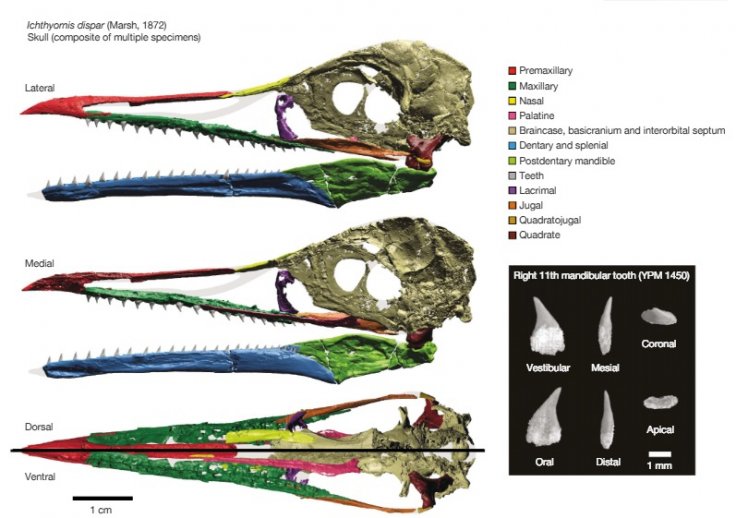
Ever imagined birds with their beak and how this physical structure has evolved? Scientists have analyzed a skull of an ancient toothed bird and the results showed that the bird's break was the first evidence of such characteristics. The research team has constructed the beak of Ichthyornis dispar, as it holds a key position in the evolutionary journey from dinosaurian species to modern-day birds.
As per the study, which was published in the journal Nature, this ancient bird used to live in this blue planet nearly 100-million-years ago in North America. This bird looked like a toothy seabird and also inspired the contributor of the science of evolution, Charles Darwin.
Bhart-Anjan Bhullar, a palaeontologist at Yale University in the US, told The Hans India, "Right under our noses this whole time was an amazing, transitional bird. It has a modern-looking brain along with a remarkably dinosaurian jaw muscle configuration."
The research stated that even though there are partial specimens of Ichthyornis, which lived 100–66 million years ago, there has been no particular new skull material apart from the incomplete remains that found in the 1870s.

Now, the scientists have reported new specimens with three-dimensional cranial remains Ichthyornis dispar, "including an unusual complete skull, as well as two previously overlooked elements from the Yale Peabody Museum holotype." The study said that the researchers used computed tomography (CT) imaging to bring Ichthyornis fossils to life.
While explaining how those beaks looked like when it first emerged in nature, Bhullar said that the first beak, that became a part of the birds, "was a horn-covered pincer tip at the end of the jaw. The remainder of the jaw was filled with teeth. At its origin, the beak was a precision grasping mechanism that served as a surrogate hand as the hands transformed into wings."
Even the study author Daniel Field from the University of Bath told Newsweek that the beak began as just the tiny tips of Ichthyornis dispar's toothy jaw.
In addition, Field said that "Over time, the portion of the upper jaw devoted to the beak expanded. The tooth-bearing jaw elements became much smaller and ultimately lost their teeth."
As per the author, the fossil study has provided a direct evidence of the evolutionary transformations that have given rise to modern birds. He also said that the extraordinary findings of the new specimen have shown that the "late retention of dinosaur-like features in the skull of Ichthyornis - one of the closest-known relatives of modern birds from the Age of Reptiles."
Not only the beak, but Ichthyornis dispar had a brain similar to modern developed birds. Field explained that a modern brain structure of a bird "coexisted with a very dinosaur-like architecture of the skull—far more so than has been previously appreciated." Essentially, this indicates that during the evolution of birds, the brain transformed first.









